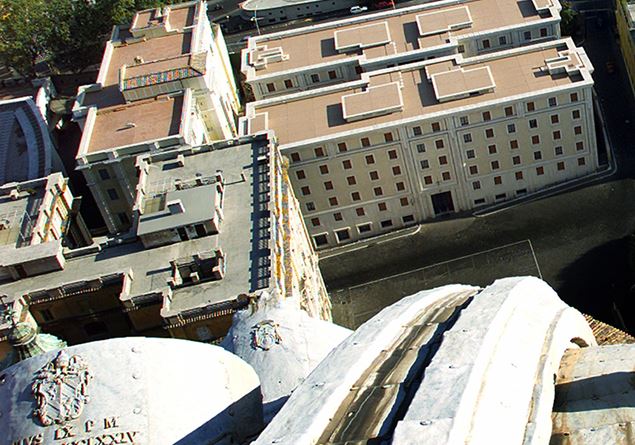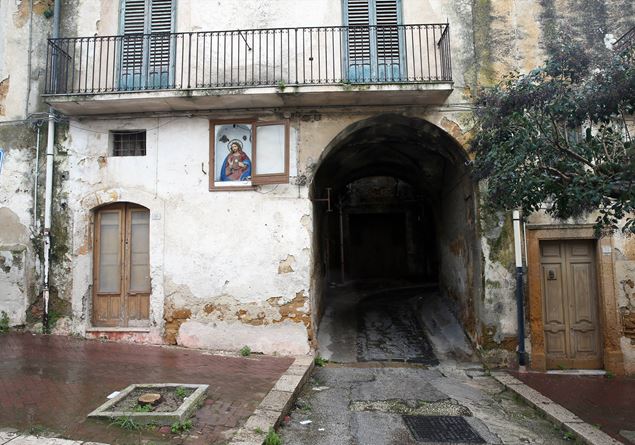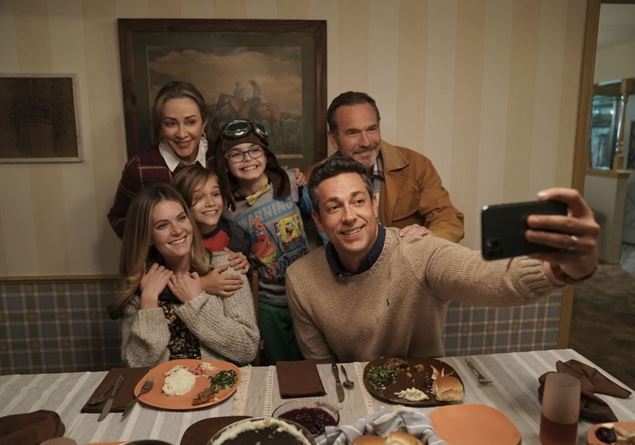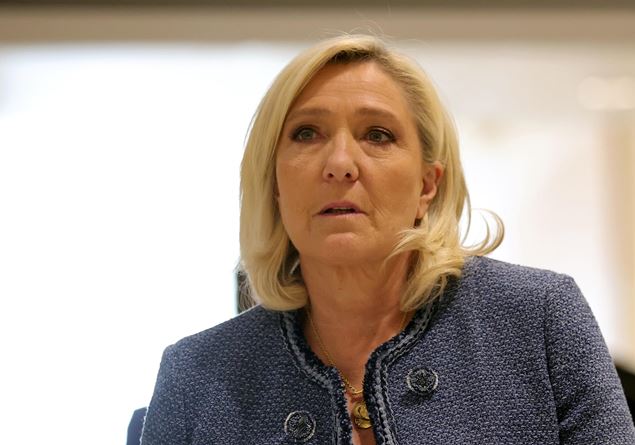In the first “jubilee” hearing of the extraordinary Holy Year of Mercy, on January 30, 2016, Pope Francis He spoke of the place where he chose to live in the Vatican, since his election: Casa Santa Martaor Domus Sanctae Marthaethe official name in Latin.
On that occasion Bergoglio told some details of his residence and let himself go to some confidences: «The Pope lives behind, at Casa Santa Marta. Some of you wondered how the pope’s house is“, He said, addressing the faithful,”It is a large house, where about forty priests and some bishops inhabit that they work in the Curia, and there are also guests passing by: Cardinals, bishops, lay people who come to Rome for the meetings in the dicasteries, and these things … and there is a group of men and women, who carry on the work of the house, both in the work of cleaning, in the kitchen, in the dining room. And this group of men and women are part of our family, they form a family: they are not distant employees, because we consider them as part of our family ».
The Pope’s residence, in fact, arises right a stone’s throw from St. Peter’s Square, Entering the bell arch, on the left of the Basilica. It overlooks the entrance side in the large square which then goes up to the Vatican station and the Vatican gardens and, on the opposite, on the external perimeter of the small state towards Porta Cavalleggeri.
By now everyone calls it “The Pope’s house”, but it is a house that has an ancient history, renovated many times during the centuries and with alternate vicissitudes. The residence currently has 105 suite with two rooms and 26 single rooms eD is managed by the Sisters Daughters of the Charity of San Vincenzo de ‘Paoli.
The name comes from the church and the adjacent house that was born as a small hospital in 1538 and remained such until 1726, when it became a convent for the trinitarian fathers for almost a hundred years.
The small church of Santa Marta was defined by the Romans “The Lume of San Pietro” and he went under the pontificate of Alessandro Farnese, Pope Paul III, which reigned from 1534 to 1549, an important and controversial figure, certainly one of the most eminent personalities of the Italian Renaissance. It was he, in 1542, who convened the Council of Trent to respond to the Protestant Reformation.
Returning to Casa Santa Marta, they were some servants of the Apostolic Palace to ask and obtain from the Pope the erection of a confraternity and a small hospital for the poorest patients Next to the Vatican Basilica. Pope Farnese agrees with his document, a “short” entitled At Apostolicam Dignitatis Apicemwhich provided for chapel, cemetery and hospital.
Pope Clement VIII At the beginning of the seventeenth century, he expanded it, but then the historical vicissitudes led to the abandonment of the structure until in the mid -eighteenth century the barefoot trinitarian fathers of the Spanish congregation asked and obtained from Benedict XIII The entrusting of the abandoned structure to make it a “Commissioner Commune for the guest religious of any nation of the same order that will come to this city of Rome”.
In short, The origins of Santa Marta as a temporary residence, a hotel, as we would say today, date back over two centuries ago. In 1733 six friars lived there and Pope Pius chose his confessors with each other.
The Fiat 500 with Pope Francis on board on 23 March last after the resignation from the Gemelli Polyclinic enters the Vatican from the Porta del Perugino, the closest to Casa Santa Marta (ANSA)
With the proclamation of the Jacobin Republic, the French in 1798 arrested Pope Pius VI and brought him to France where he died in exile in Valence, accompanied until his death from the last Trinitarian religious of Santa Marta, Father Girolamo di San Giacomo.
Yet, despite the Napoleonic policy of systematic suppression of religious orders during the Roman Republic between the eighteenth and nineteenth centuries, in Santa Marta it always remained a trinitarian religious, who allowed the continuity of the cult in the small church for 40 years.
In 1819, once again, the church and the annexed building found themselves in dramatic conditions. The Spanish Trinitaries had almost completely disappeared, but the prosecutor general of the religious obtained the administration of the house and the Church and spent a lot of money to restore them.
Until Pius VIII in 1830 gave possession of the structure to the Italian Trinitaries. For a period, the house passed under the management of the Italian Trinitarian nuns who depended on the convent of Subiaco and made a school. Then also for them the funds ended and the house returned to the Trinitarian friars.
With the establishment of the Italian unitary state and the suppression of religious orders in 1873, the Trinitaries definitively left Santa Marta who He became part of the “absolute” properties of the Apostolic Palace. Formally, in fact, it is a sort of decandance of the apostolic palace.
After the departure of the Trinitarian Fathers, Pope Leo XIII He entrusted him to the nuns of San Vincenzo de ‘Paoli, still to make it a hospice for the sick, in the face of the spread of the danger of cholera. Rome was preserved by the disease and in 1891 the Pope destined the hospice to the poor patients of the districts around the Vatican and the care of the pilgrims who arrived in Rome.
In short, The “Pope’s house” had to be a house of charity and still hosts an outpatient clinic next to poor children.
During the Second World War, Santa Marta hosted the ambassadors at the Holy See, who could no longer live in their residences in Italy, because their countries had broken diplomatic relations with the government of Mussolini. For five years, diplomatic representatives in the Vatican of United States, Great Britain, France, Poland, Belgium.
It was after the war that in the residence of Santa Marta they also began to be hosted priests from all over the world that had been called by the Pope to collaborate with the secretary of state and with the other congregations of the Holy See.

A view of the Santa Marta house from the outside of the Vatican wall (Reuters)
The residence in the current form was inaugurated in 1996. With the last restructuring it was also raised by a plan and this caused controversy with the environmental association “Italia Nostra”, which criticized the decision because there‘raising prevented the complete view of the dome from the streets of Rome which are located next to the Vatican.
The controversy became informed and had to intervene in 1993 the International Council of Monuments and Sites and the UNESCO which gave a favorable opinion to the renovation of the building, which replaced the previous one. The works ended, in fact, in 1996.
Santa Marta was destined for the residence of the cardinals during the conclave by the apostolic constitution of John Paul II Dominici Gregis universes promulgated on February 22, 1996 Benedict XVI Normas Nonnullas of 22 February 2013.
Pope Francis He entered Santa Marta da Cardinale, to participate in the conclave of March 2013, and has not abandoned him since then.
After the election he only changed the room, from 207 to 201, which is located on the second floor. Here the convalescence period is also experiencing after the resignation from the Gemelli Polyclinic undergoing drug therapy to treat the posthums of bilateral pneumonia, a program of motor physiotherapy and respiratory exercises to train the lungs fatigued by the infection.
In June 2013 he himself was publicly explained the reasons why he had chosen Santa Marta as his residence instead of the apostolic palace, usually reserved for the popes. He said, with a certain self -irony, which were at the base «Psychiatric reasons. For me it is a personality problem: that’s all. I need to live in the midst of people, and if I lived alone, maybe a little isolated, I wouldn’t help me ».
The Pope also added that “He was not used to living in such large spaces” Referring to the papal apartment of the Apostolic Palace, which develops to Northeast of the Basilica of San Pietro and also includes some administrative offices.
The rooms reserved for the Popes are located on the third floor and there are about a dozen. Among these, after a series of waiting rooms, there are the private study of the pontiff, which is the one overlooking the Sunday for the recitation of the Angelus; a rather vast dining room; The hearing room, where guests are received officially.
They are environments that have been retouched by every pope who lived there and the most relevant renovation dates back to 2005, after the death of John Paul IIwhen among other things the library of Benedict XVI was transferred here, which was made up of 20 thousand volumes.

Pope Francis, together with some of his collaborators, in the Hall of Casa Santa Marta on March 17, 2014 (Reuters)










